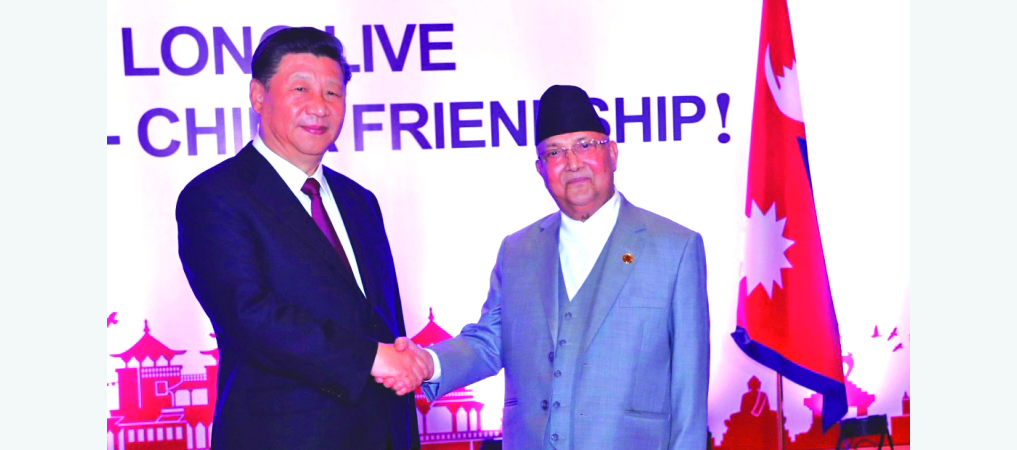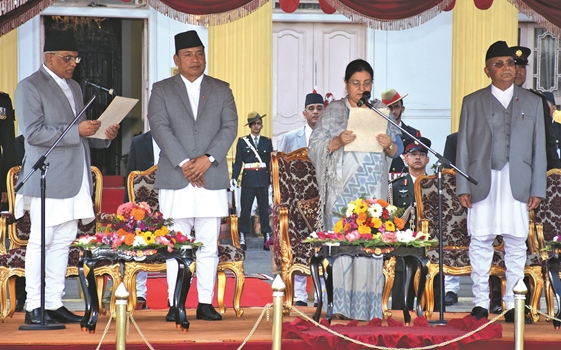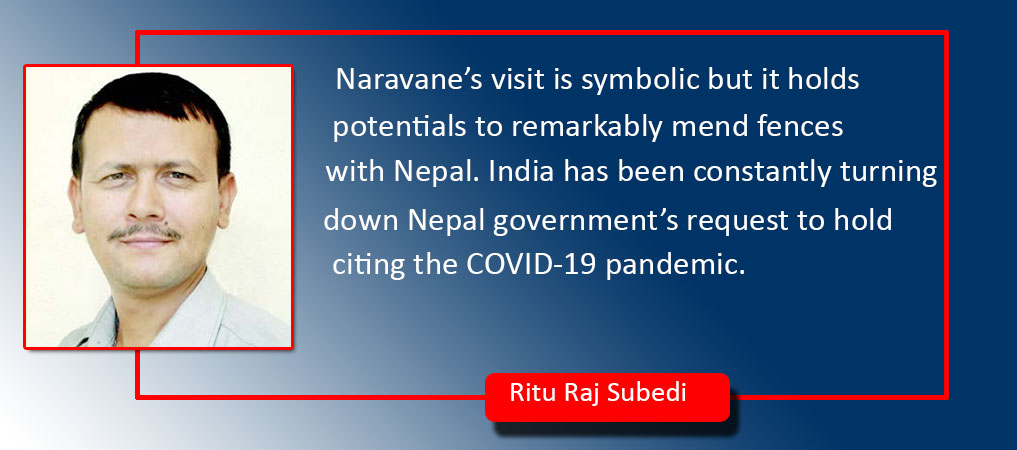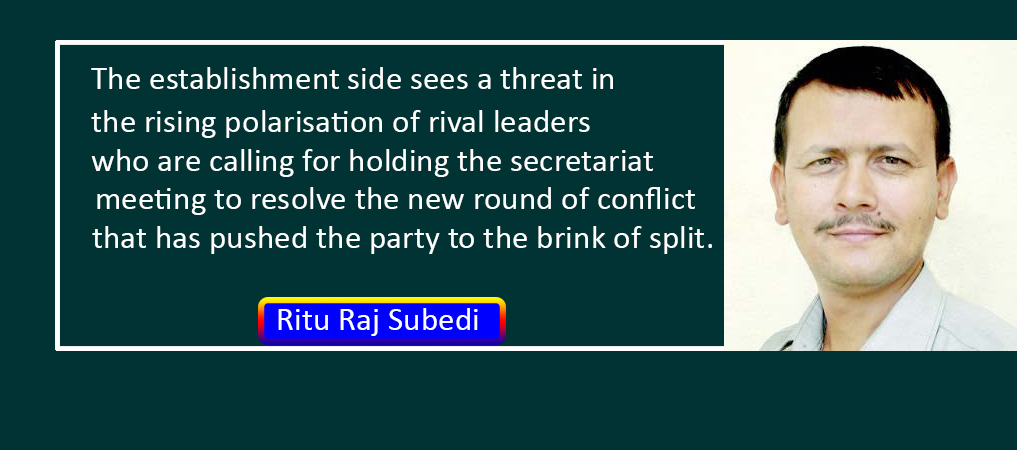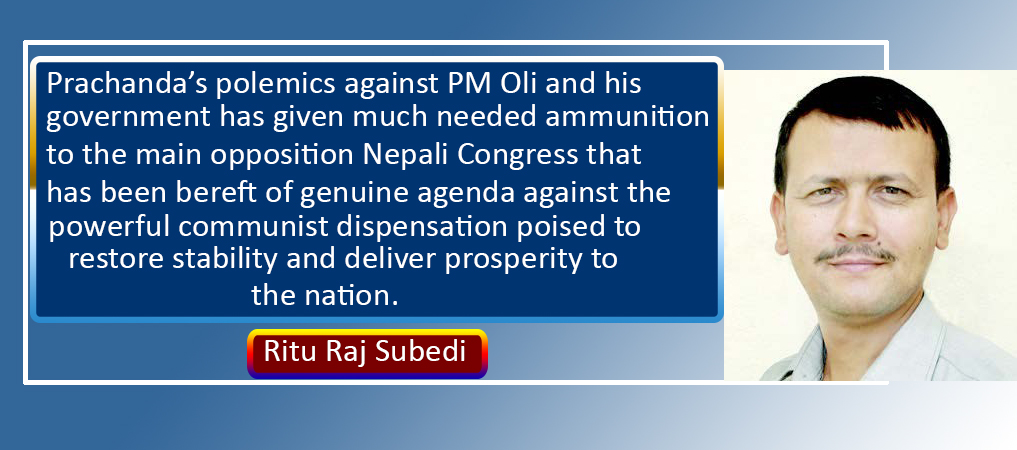COVID-19’s Lesson Regulate Nepal-India Open Border
Ritu Raj Subedi
It seems renowned philosopher George Santayana’s oft-quoted adage - ‘those who cannot remember the past are condemned to repeat it’ – is meant for us, as we are reeling from the devastation of the second wave of COVID-19 pandemic. In March 2020 when the coronavirus first caught the country off guard, the world knew little about its genetic qualities. There was no medicine or vaccine to kill the virus or prevent its transmission. But one thing was clear. The virus did not directly arrive here from Wuhan of China where it first spread in the community. It mainly entered the country from its southern border. The virus had begun to raise its tentacles in Nepal after running amok in India, thanks to the open, porous and unregulated border between the two nations.
India returnee Nepali migrant workers also carried the virus with them as they were forced to return to native land in hordes. It will be wrong to solely blame these poor fellows for virus spread. It is our poor border management and resource constraint that made it impossible to test, trace and treat the thousands of COVID-19 infected persons entering Nepal during the pandemic. With India coming under the onslaught of the second wave of pandemic, there was again the influx of Nepali workers into Nepali territory. They have been widely suspected of proliferating the Indian and UK variants of the virus that proved more fatal and deadlier, infecting and killing thousands of Nepalis. The country has been condemned to repeat the past mistake and suffered the consequences.
Bitter fact
The COVID-19 has taught us a lesson that around 1,800-km Nepal-India border must be regulated because, like other bad things, pandemic has also came here through the porous and lax border. The open border is often hailed as the symbol of roti-beti (bread and daughter) ties between the two neighbours, as it facilitates unhindered movements of people from both sides of territory. However, this glosses over some bitter facts that the unregulated border has led to the frequent occurrences of various types of crimes such as terrorist activities, human trafficking, loss of revenue in the form of customs evasion, and smuggling of illegal drugs, counterfeit Indian currency and contraband, among others.
Of course, Nepal and India share deep social, cultural, religious and economic ties. Nonetheless, this does not mean that the border should be left unregulated. A well-managed and regulated border is in the interest of both neighours for this reduces the incidents of crime and promotes harmony and understanding between the two peoples. The governments of both nations had also realised the need for bringing people’s movements and activities across the border within the legal ambit but the Indian side has shown a sense of apathy as seen in its reluctance in implementing a report of the Eminent Persons’ Group on Nepal-India (EPG) drawn in July 2018. In the report, the governments-appointed experts of both nations had agreed to regulate the border by making people produce identity cards while crossing over the border.
Last month, the Supreme Court (SC), in its landmark mandamus order issued in the name of government, instructed the latter to regulate and control the open border between Nepal and India for the peace and security of the country by reviewing the agreements and treaties in this regard. Responding to a writ filed by five individuals, including senior advocate Chandra Kant Gyawali and border expert Buddhi Narayan Shrestha on March 26, 2017, the court obliged the government to maintain the record of the people entering Nepal via land routes so as to ensure the safety of Nepalis and their property, and control border misuse and encroachment. The apex court has stated that it is the constitutional duty of the government to ensure border security and asked it resolve the problems arising from the open border through diplomatic means. The court verdict is historic as it underpins the constitutional basis for border management and prevention of infringement on borderland.
Passport requirement
Prior to the 1951 political change, the people were mandatorily required to produce passports or permits when they entered Nepal from India. According to Passport Rule, 2009 B.S. of Nepal Gazette Part 9, Nepali emigrants, who have been staying abroad for many years or settled there, have to secure permit from district magistrate or city magistrate or get it from police by informing them here in advance or obtain passports from Nepali embassies or consular offices operating in foreign countries or located at Alaichikothi in Patna of India.
In order to arrange passports for the people moving to and from India, an office named Rahadani Goswara (passport general office) was in operation in Kathmandu. Clause 2 and 3 of Passport Act, 2024 B.S. has clearly specified that Nepalis can visit foreign countries only by carrying a passport. This means Indian citizens are also required to produce passport while entering Nepal. Similarly, Clause 3 of Passport Act, 2049 B.S. has mentioned that foreigners cannot enter or stay in Nepal without having passport and visa. The Act has defined ‘foreigners’ as any persons, who are not Nepali citizens.
It has been claimed that the people from both nations have been enjoying open border for centuries. However, there exist no legal documents, agreements and treaties to substantiate this line of argument. Many cite the 1950 Peace and Friendship Treaty that has a provision of allowing the people of both nations to travel each other’s nation and enjoy special rights on reciprocal basis but it has not stated that there will be open border and they can freely cross on either side. “As Nepal and India have not signed any treaty on border management, there is no compulsion for Nepal to maintain open border with the southern neighbour,” said Shrestha.
Now the global pandemic has shown that it spreads even faster if there is no data and medical screening of people travelling across the border. As a small nation in geographical, economic and population size, Nepal often faces demographic threat from the southern neighbour. This geopolitical apprehension often manifests in Nepali political parties’ ideological narratives, polemics and protests. A country that can’t protect and manage her border also fails to guarantee people’s security, her sovereignty, territorial integrity and stability.
(Deputy Executive Editor of The Rising Nepal, Subedi writes regularly on politics, foreign affairs and other contemporary issues. subedirituraj@yahoo.com)
Recent News

Do not make expressions casting dout on election: EC
14 Apr, 2022
CM Bhatta says may New Year 2079 BS inspire positive thinking
14 Apr, 2022
Three new cases, 44 recoveries in 24 hours
14 Apr, 2022
689 climbers of 84 teams so far acquire permits for climbing various peaks this spring season
14 Apr, 2022
How the rising cost of living crisis is impacting Nepal
14 Apr, 2022
US military confirms an interstellar meteor collided with Earth
14 Apr, 2022
Valneva Covid vaccine approved for use in UK
14 Apr, 2022
Chair Prachanda highlights need of unity among Maoist, Communist forces
14 Apr, 2022
Ranbir Kapoor and Alia Bhatt: Bollywood toasts star couple on wedding
14 Apr, 2022
President Bhandari confers decorations (Photo Feature)
14 Apr, 2022



